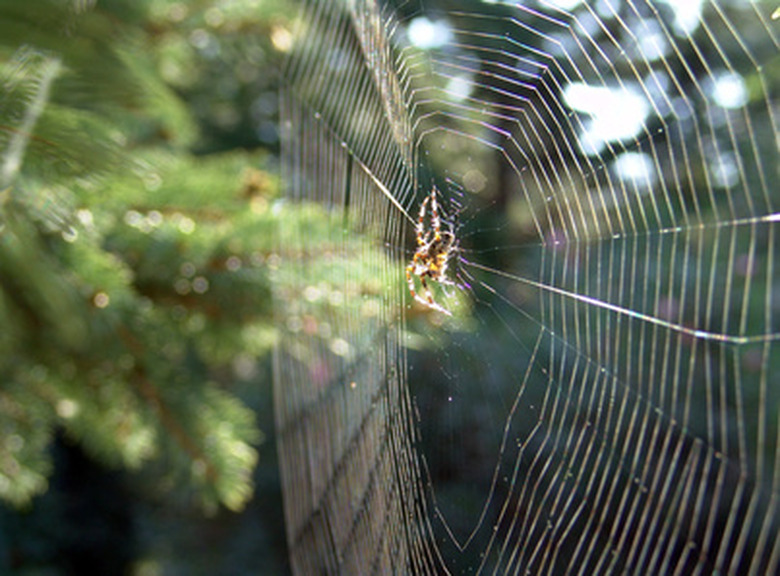Canadian Poisonous Spiders
A common misconception is that spiders are insects. Spiders are arachnids and are closely related to mites, ticks and scorpions. Spiders are considered predators and generally bite and inject venom into their prey. However, spiders rarely bite humans, and if they do, it is only when provoked.
Spiders are found worldwide on every continent except Antarctica. Thousands of species can be found in Canada, but very few are considered a health threat. Though there have been reports of brown recluse spiders in Canada, no scientific evidence supports these allegations as of 2010.
- A common misconception is that spiders are insects.
- Thousands of species can be found in Canada, but very few are considered a health threat.
Black Widow Spider
Of the five species of black widow spiders in North America, only two can be found in Canada: the western black widow and the northern black widow. The western black widow is found from southern Saskatchewan, Alberta and British Columbia south into Mexico. The northern black widow is found from southeastern Canada south to Florida.
In both species, the female is one-quarter to three-quarters of an inch in length. Their abdomen is somewhat round and shiny black with markings on the underside. The western black widow's markings are a reddish-orange and shaped like an hourglass. The northern black widow's markings are either red or yellowish and resemble two colored triangles whose tips don't touch.
- Of the five species of black widow spiders in North America, only two can be found in Canada: the western black widow and the northern black widow.
- The western black widow's markings are a reddish-orange and shaped like an hourglass.
They are timid creatures that prefer secluded places such as rock piles, fallen trees, stacks of firewood, basements and garages or sheds.
The black widow's venom is a neurotoxin that attacks the nervous system. The bite is not always felt immediately, but pain will soon develop. Bites are rarely fatal when promptly treated; however, small children and those with compromised immune systems are at greater risk.
Hobo Spider
The hobo spider can be found in southern British Columbia. These spiders are brown in color with bodies approximately a half-inch long. Their abdomens are spherical. It is very difficult to distinguish the hobo spider from the common house spider. Only an arachnologist can make a positive identification of this species.
- They are timid creatures that prefer secluded places such as rock piles, fallen trees, stacks of firewood, basements and garages or sheds.
- Only an arachnologist can make a positive identification of this species.
Hobo spiders are a species of funnel web weavers. These spiders weave a layered, flat web that resembles a funnel and await their prey within this lair. This species is also characterized by its ability to move rapidly.
Hobo spider bites are believed to be necrotic. Because reported bites are extremely rare, a definitive pronouncement on the matter has yet to be made by leading arachnologists. Hobo spider bites should always be taken seriously and treated promptly.
Yellow Sac Spider
This species is native to southwestern Canada from British Columbia to southern Alberta. Yellow sac spiders are relatively small–about the size of a nickel. They have no markings and are usually light yellow to pale green in color. Members of this species build a sacklike, silken tube in foliage or under stones as their lair.
- Hobo spiders are a species of funnel web weavers.
- Hobo spider bites are believed to be necrotic.
According to Utah State University, these spiders may be responsible for more human bites than any other spiders. Their bite is not unlike that of the sting of a wasp or hornet. The yellow sac spider's venom is cytotoxic, which means that it kills cell tissue. The harm, however, is localized.
